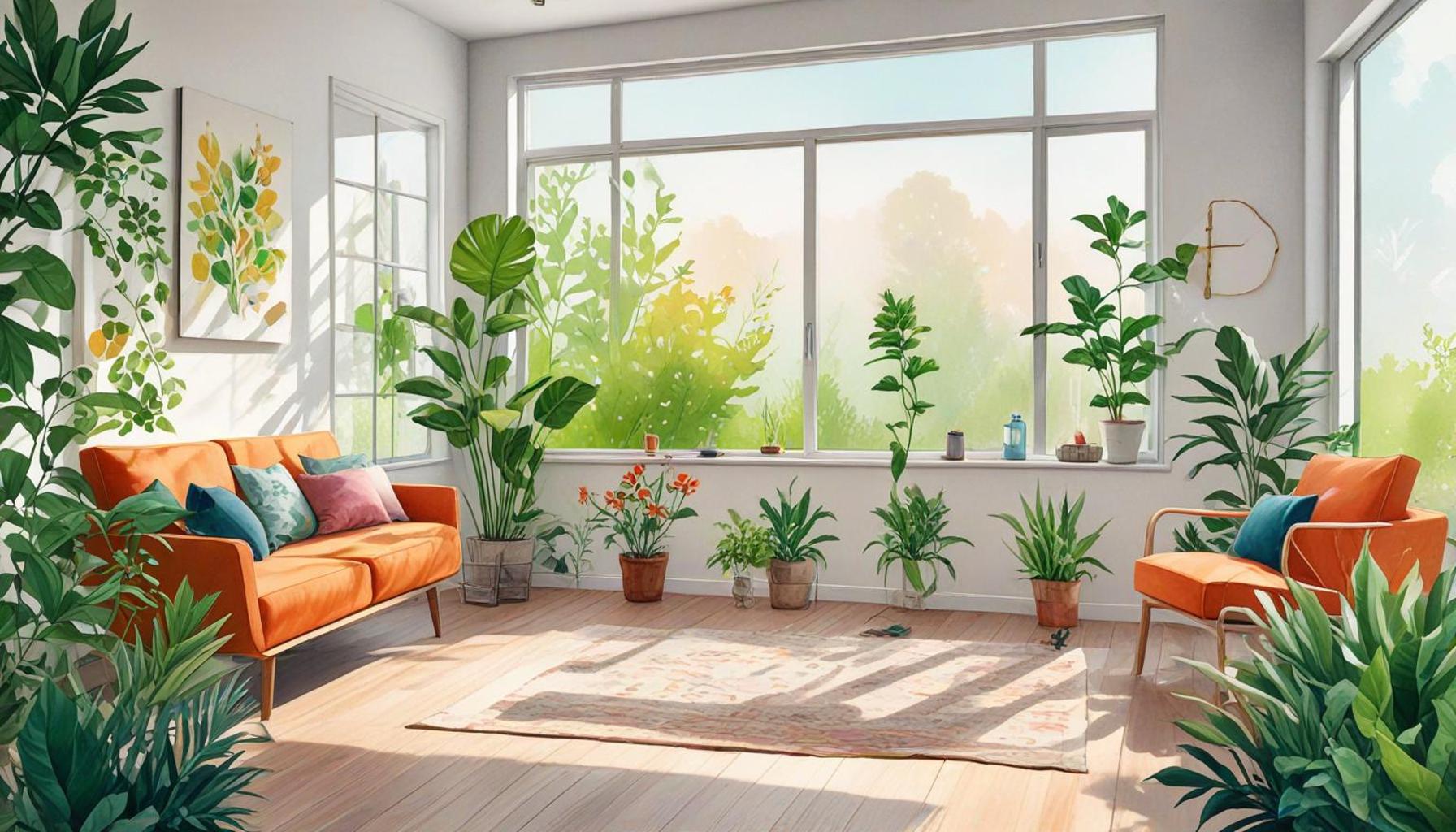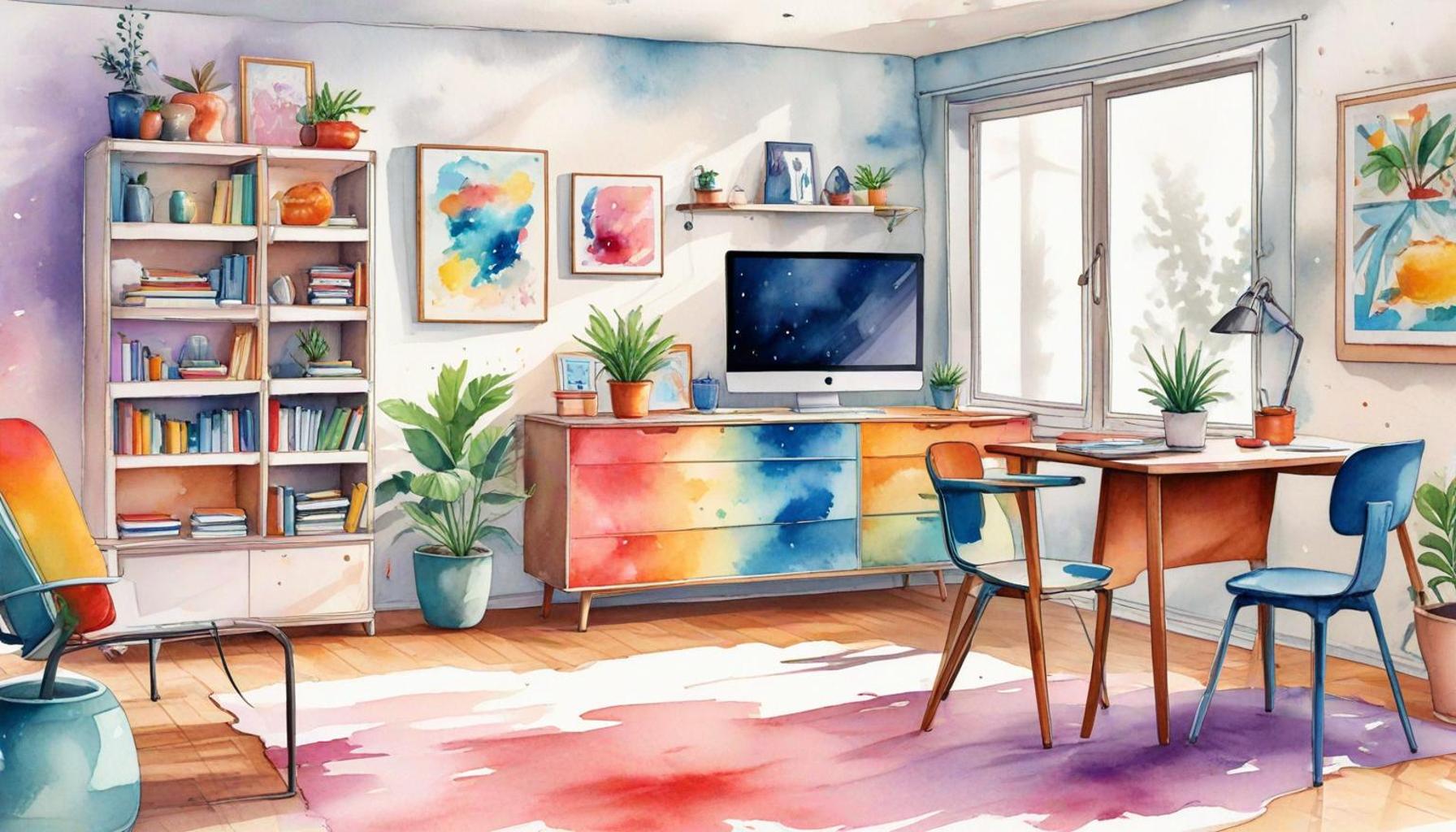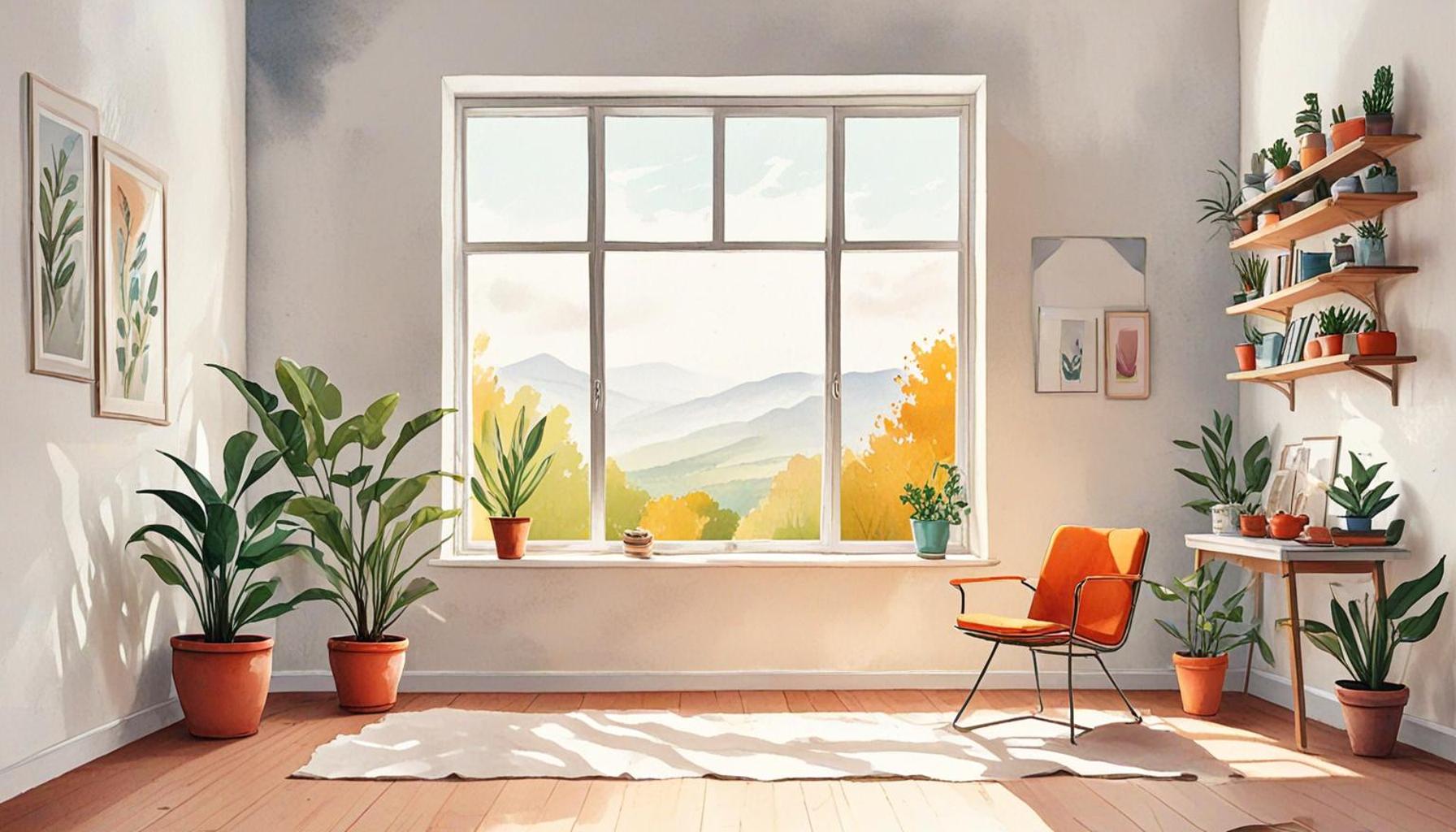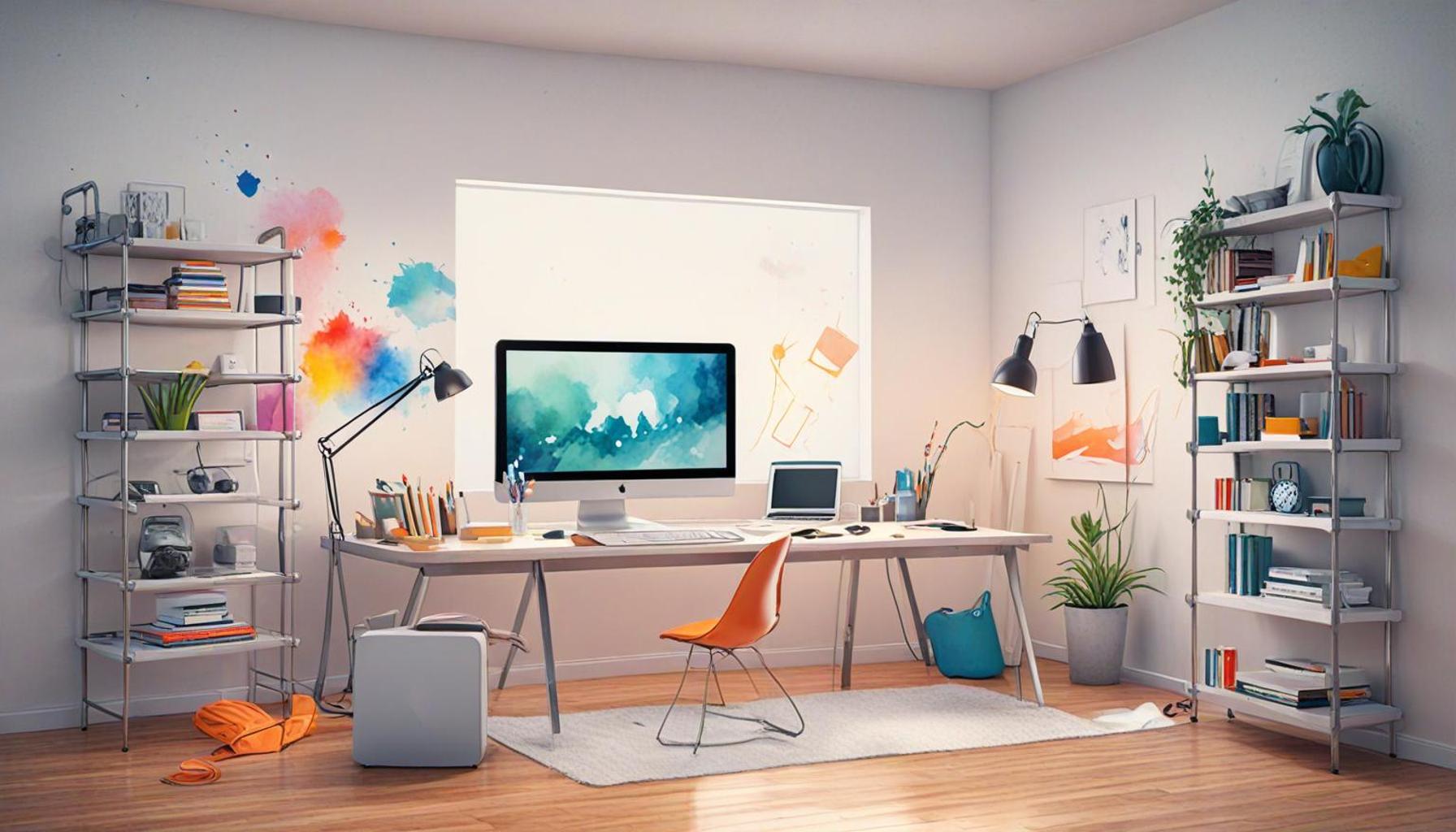Biophilic Design: Integrating Natural Elements to Enhance Functionality and Well-Being in Minimalist Spaces

Embracing Nature in Design
In a world increasingly dominated by technology and urban sprawl, the concept of biophilic design emerges as a breath of fresh air. This innovative approach focuses on integrating natural elements into our living and working environments, aiming to enhance both functionality and well-being. By marrying nature with minimalist aesthetics, biophilic design offers a pathway to tranquility amidst chaos. Mindfully incorporating nature not only beautifies spaces but also creates emotionally enriching and mentally stimulating environments.
Key Benefits of Biophilic Design
Integrating natural elements into minimalist spaces can profoundly impact our daily lives. Here are some of the notable benefits:
- Improved Mental Health: Numerous studies indicate that exposure to nature reduces stress and promotes relaxation. For instance, individuals working in offices with natural views report lower instances of anxiety and improved focus, as the greenery serves as a natural stress reliever.
- Enhanced Creativity: Natural elements can inspire innovative thinking and productivity. A 2018 study found that individuals working in environments rich with plants and natural light showed a significant increase in creative problem-solving abilities. Being around nature can spark fresh ideas and encourage a more dynamic work output.
- Increased Energy Levels: A well-designed space encourages physical activity and engagement. Including features such as walking paths, outdoor spaces, or even just better ventilation can invigorate occupants, making them feel more energized and ready to take on daily tasks.
What to Incorporate?
When considering biophilic design, think about the following elements that not only enhance aesthetics but also create a more immersive experience with nature:
- Natural Light: Maximize window space and use skylights to allow sunlight to flood into spaces. Natural light has been shown to improve mood and boost vitamin D levels, which is particularly essential during cold, dark winters in many parts of the U.S.
- Indoor Plants: Introduce greenery for aesthetics and air purification. Plants such as snake plants, peace lilies, and pothos are not only easy to maintain but also known to filter indoor air, contributing to a healthier living environment.
- Natural Materials: Incorporate materials such as wood, stone, and water to connect with nature. For example, installing a small indoor fountain or using reclaimed wood for furniture enhances tactile experiences and creates a soothing soundscape that mirrors the tranquility found in nature.
By understanding how these elements can enhance functionality and aesthetics, we open the door to a more sustainable and harmonious way of living. Delving deeper into the principles of biophilic design reveals a transformative approach that not only elevates our spaces but also nurtures our well-being. As you explore ways to incorporate nature into your daily environment, consider the significant benefits that await in terms of wellness, creativity, and energy. With the right adjustments, our homes and workplaces can become sanctuaries where both nature and productivity thrive.
DIVE DEEPER: Click here to learn how to create efficient spaces at home

Incorporating Nature into Everyday Life
The integration of natural elements in design is not merely a trend; it is a shift in how we perceive and interact with our environments. As the principles of biophilic design gain traction, they highlight the importance of creating spaces that foster human connection to nature. This approach embraces the ethos of simplicity inherent in minimalist design while inviting the beauty and calming effects of the natural world into our everyday lives.
Exploring Nature’s Influence
Understanding the various ways in which nature influences our mood and behavior is crucial. Research has consistently demonstrated that environments enriched with natural elements lead to numerous psychological and physical benefits. A notable study published in the journal Environmental Psychology showed that individuals who spent time in naturally designed environments reported an increase in feelings of happiness and a decrease in levels of stress hormones. Such findings underscore the significance of embracing nature not just for aesthetic purposes, but as a fundamental component of human well-being.
Here are several key aspects that underscore nature’s influence within minimalist design:
- The Power of Greenery: Plants are a quintessential aspect of biophilic design. They not only enhance visual appeal but significantly improve air quality. Research indicates that incorporating plants can lead to a reduction in indoor air pollutants, resulting in a healthier environment and increased productivity among occupants.
- Water Features: The sound of flowing water has a calming effect, making water features an excellent addition to minimalist spaces. A small indoor fountain or a carefully designed pond can create a serene atmosphere, allowing occupants to feel more connected to nature.
- Natural Color Palettes: Using colors found in nature—such as earthy browns, lush greens, and soft blues—can evoke feelings of tranquility and comfort. Color psychology shows that such palettes can positively affect mood, leading to a more satisfying living or working environment.
These elements do not only beautify a minimalist space; they promote engagement, reduce mental fatigue, and increase overall happiness of the inhabitants. As we look to the future of design, it becomes increasingly important to recognize how biophilic principles can enhance our spaces, providing a balance between modern minimalism and the breathtaking intricacies of nature. Embracing these design strategies invites us to create environments that support not only our daily tasks but also our necessity for peace and well-being.
Incorporating creativity and innovation through biophilic design allows us to break free from the confines of artificial environments, guiding us toward layouts that inspire rejuvenation. As such, the journey to create healthier, happier spaces begins with the thoughtful integration of nature into our everyday life.
| Advantage | Description |
|---|---|
| Enhanced Well-Being | Integrating natural elements fosters a strong connection to nature, reducing stress and increasing overall happiness. |
| Improved Functionality | Natural materials and designs can optimize space utilization, enhancing comfort and facilitating everyday activities. |
The concept of biophilic design revolves around the innate human connection to nature, promoting environments that enhance overall well-being and efficiency. By integrating natural elements into minimalist spaces, one can experience an improvement in air quality through the placement of indoor plants, which not only purify the air but also bring a sense of tranquility. These enhancements are particularly relevant in urban settings where green spaces are limited. Moreover, biophilic design principles can contribute to increased productivity. Research indicates that natural light and organic materials can reduce fatigue and enhance focus. This synergy creates a soothing, yet functional atmosphere, perfect for individuals working or living in bustling city environments. Expanding these principles can assist in both residential and commercial projects, inviting nature into everyday activities and elevating daily experiences. The ongoing exploration of these themes presents abundant opportunities for architects and designers, pushing the boundaries of conventional design and integrating elements that not only fulfill aesthetic criteria but also embrace fundamental human needs.
DISCOVER MORE: Click here to dive deeper
Creating Sustainable Spaces through Biophilic Design
As our world grapples with rapid urbanization and climate change, the call for sustainable practices within architecture and interior design becomes increasingly urgent. Biophilic design stands at the forefront of this movement by offering solutions tailored to enhance both functionality and well-being. Incorporating natural elements into minimalist spaces not only fosters personal health but also champions environmental sustainability.
Natural Materials and Sustainability
One key aspect of biophilic design is the use of natural materials. Materials that are sustainably sourced, such as wood, bamboo, and stone, contribute to a lower carbon footprint while also creating warm, inviting environments. For instance, reclaimed wood can be used for flooring, furniture, or accent walls, offering unique textures and authentic aesthetics while minimizing waste. Studies have shown that environments with natural materials can enhance feelings of comfort and well-being among occupants, as well as reduce stress levels.
The choice of materials isn’t merely a cosmetic consideration; it intertwines with our ecological responsibilities. Eco-friendly materials decrease the dependency on harmful manufacturing processes and energy consumption, compelling designers to consider the life cycle of every component. Additionally, organic fabrics—like cotton, linen, or wool—furnish spaces with breathable quality, contributing to healthier indoor air while infusing a sense of nature.
Biophilic Lighting Solutions
Natural light plays an instrumental role in defining the quality of our environments. Incorporating abundant daylight through large windows, skylights, or light wells facilitates a sense of openness and connection to the outside world. Research suggests that exposure to natural light significantly boosts productivity and enhances overall mood. For instance, many modern offices in the United States have embraced this concept, designing workspaces that maximize daylight exposure, leading to a reported 18% increase in employee satisfaction.
Beyond daylight, the quality of artificial lighting mimicking natural light can also play a significant role in biophilic design. Utilizing LED options that adjust to the time of day can create a harmonious balance that supports circadian rhythms, ultimately improving focus and sleep patterns.
Engaging the Senses through Nature
Beyond visual elements, biophilic design also appeals to other senses. Auditory elements, such as the sounds of nature, can be seamlessly integrated. The gentle rustle of leaves, birdsong, or rainfalls can be introduced through thoughtfully curated soundscapes. Such integration can transform a simple minimalist environment into a holistic experience that nourishes both spirit and productivity.
Moreover, incorporating fragrant plants or essential oils can engage the sense of smell, creating a calming atmosphere that further fosters well-being. Environments resonating with tailored sensory experiences have the potential not only to inspire creativity but also to create a deeper emotional connection between individuals and their spaces.
As the principles of biophilic design continue to grow in significance, integrating natural elements into minimalist spaces empowers individuals to co-exist harmoniously with their environments. By embracing sustainability, sensory engagement, and the essence of nature, we pave the way for innovative designs that promote well-being and functionality like never before.
DISCOVER MORE: Click here to optimize your space
Conclusion: A Future Rooted in Nature
As we look to the future of architecture and interior design, biophilic design emerges as a pivotal solution marrying our need for functionality with the innate human connection to nature. By embracing natural elements and sustainable practices, we can transform minimalist spaces into nurturing environments that not only improve our well-being but also foster a sense of belonging within the world around us.
The integration of sustainable materials, abundant natural light, and sensory-rich experiences shifts our design philosophy from mere aesthetics to holistic living. For instance, employing eco-friendly materials and maximizing daylight do more than beautify a space—they enhance productivity, boost mental health, and reduce stress. These elements collectively contribute to healthier living and working conditions, resonating with a growing public awareness of environmental issues and personal wellness.
As we continue to explore and innovate in the realm of biophilic design, it challenges us to reconsider our relationship with the built environment. What if our interiors not only served functional needs but also inspired us to reconnect with the natural world? Inspired designs can spark creativity, ignite emotional connections, and sustain our overall health.
Thus, as we endeavor to reshape our spaces to reflect our values and aspirations, biophilic design provides a compelling blueprint. By fostering environments that harmonize with nature, we can influence not just our personal well-being but also the health of our planet. In a world increasingly dominated by artificial elements, might we reclaim the essence of nature, paving the way for interiors that truly reflect who we are?


